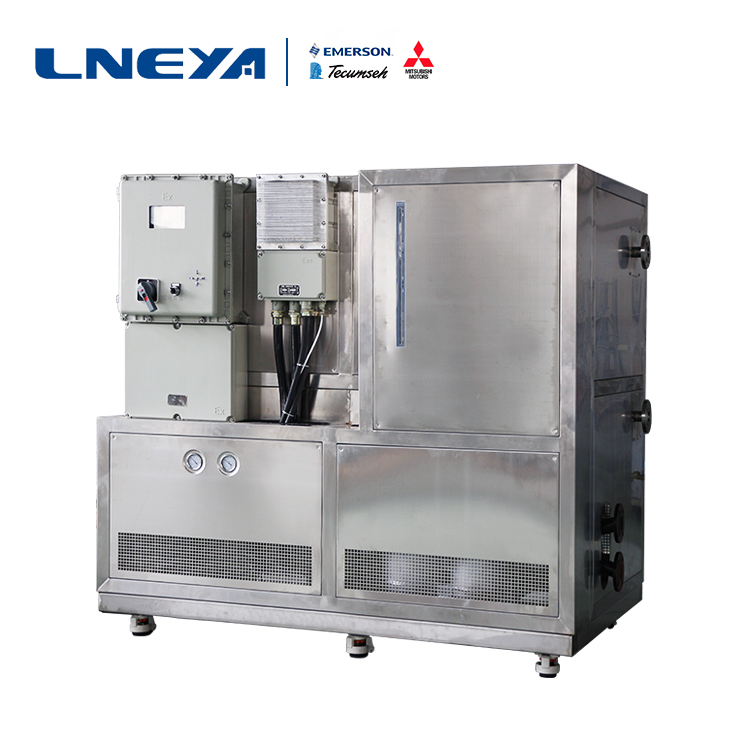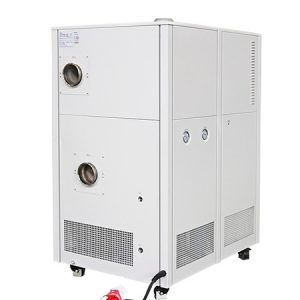Principle of TCU temperature control system
Use area: can be used in various explosion-proof areas
The temperature control unit (TCU) is mainly used in reactor heating, cooling temperature control in fine chemical, chemical pharmaceutical, and biopharmaceutical processes. It can realize automatic control of temperature rise, temperature drop, constant temperature and distillation during the reaction process, especially suitable for the reaction process. There is a process control that requires heat and heat.
When the TCU 온도 제어 장치 is in high-efficiency operation, it must pay attention to timely protection and maintenance. If the equipment is actively handled under the condition that the equipment is subject to defects, the service life of the equipment will become longer.
Users can get a closed and repeatable temperature control over a wide temperature range, temperature control from -120 to 300 °C; avoid the need for replacement of traditional equipment and jacket maintenance; smaller fluid volume is also guaranteed The control loop reacts quickly and the thermal reaction delay is small. Built-in electric heating and heat conduction and auxiliary system, can be automatically opened according to demand, reducing steam pressure. The device has a standardized interface, which can increase the heat source heat exchange module according to actual needs.
The TCU device opens the angle of the electric regulating valve according to the instruction given by the system PLC, and controls the flow rate of the low temperature liquid into the reaction jacket jacket, thereby achieving energy saving and high efficiency. All signals fed back by this process are based on temperature.

LNEYA’s TCU temperature control system principle:
1. The method of changing the control set value can respond to the system lag in the process as soon as possible, and get a small system overshoot. Control consists of two sets of PIDs (each group of PIDs are variable) control loops;
2. A specially designed lag predictor (no model self-built tree algorithm) generates a dynamic signal yc(t) instead of the process variable y(t) as a feedback signal. Generating an e(t) signal to the controller to cause the controller to predict that the control action has no large hysteresis, so that the controller can always generate a suitable control signal;
3. Through three-point sampling (material temperature point, temperature control system outlet temperature, temperature control system inlet temperature), through our company’s own model-free self-built tree algorithm and general anti-lag cascade algorithm.
관련 권장 사항
-
LNEYA의 재순환 냉각기 사용 시 주의사항
1190LNEYA's low temperature recirculating chillercan be used with supporting instruments (such as rotary evaporators,fermentation tanks, chemical reactors, freeze-drying equipment,biopharmaceutical reactors, etc.), with large cooling capacity and f...
세부 정보 보기 -
Chip test system analysis why chip test?
1255Functional failure means that a function point is not implemented. This is often caused by design. Usually, it is verified by simulation before the design stage, so usually a chip is designed and the simulation verification takes about 80% of the ...
세부 정보 보기 -
Temperature cycle failure analysis of single fluid heating refrigeration system
1139The performance of single-fluid heating and cooling systems of different manufacturers is different. LNEYA is committed to creating a high-configuration single-fluid heating and cooling system to solve the problem of cooling and heating temperatur...
세부 정보 보기 -
How to clean air control system?
1385In order to respond to the requirements of the two types of society in the country, environmental protection and conservation have become increasingly important. Therefore, in order to extend the life of the product, it is still necessary to have ...
세부 정보 보기
 LNEYA 산업용 냉각기 제조업체 공급 업체
LNEYA 산업용 냉각기 제조업체 공급 업체












